My experience with AI design tools and what it tells me about the value of human input and the support of strong partners
I am looking to enhance the branding and design of my blog page, https://zabu.cloud. But the problem is … I am absolutely unskilled when it comes to using design tools. Same goes for the pagebuilder 😉
So, I’m always on the lookout for tools that can streamline my creative process overcome my lack of skills. Recently, I decided to explore the capabilities of two well-known AI-powered design tools: Microsoft Designer and DALL E Logo Creator. You don’t need to look far to see examples of great visuals generated by generative AI tools – they’re everywhere on social media, often accompanied by a claim of how easy the creation process was. My hopes were high.
Excited by the potential of these tools to bring my visions to life, I embarked on a journey of experimentation, hoping to see my ideas materialize as stunning visual representations.
However, what followed was a series of frustrating experiences that led me to question the effectiveness of AI for design needs like mine. Realizing that this whole ‘design with AI’ thing isn’t quite as easy as it’s made out to be, it dawned on me that perhaps my prompting skills left a lot to be desired.
I’m sharing my experiences here in the hope that you can provide your thoughts and help me realize the full potential of AI for Design. Let me know in the comments 👇
AI Attempt 1 – DALL E Logo Creator
My first disappointment came with the DALL E Logo Creator, a platform touted for its ability to generate highly detailed and imaginative images based on textual prompts. Eager to see a 3D rendition of my existing Zabu.Cloud logo, I uploaded my current logo as an attachment to go along with my prompt.

After hitting ‘generate’, I waited expectantly for the magic to happen. But the result didn’t make me happy … nowhere near. So I started to refine my prompt, and then refine it again with the intention of being even more precise. Hours passed, and the results changed but the results still fell way short of my expectations. Quite simply, what DALLE produced lacked the sophistication and fidelity I had envisioned. This left me wondering if the technology was capable of understanding complex design instructions.
Don’t get me wrong. Most of the images were beautiful and the image quality is consistently. It’s just that they weren’t what I wanted and were not in line with what my prompts indicated.
Below, you can find some examples of the outputs generated in response to my inputs (example Prompt):
Hey DallE. I designed the attached logo for my blog a long time ago. This logo is a 2D light bulb, hand colored with the colors of my website. The continents of the world map are overlaid as cutouts. I used the following colors from top to bottom to color it with digital pencils: #DA772D, #E5A06C, #33405C, #858C9D, #C3D1DE, #7494B3. I would like to have this as a 3D Logo with the same colors and with a world map on it. Make it natural looking. Use my uploaded image as reference and nicely detailed.
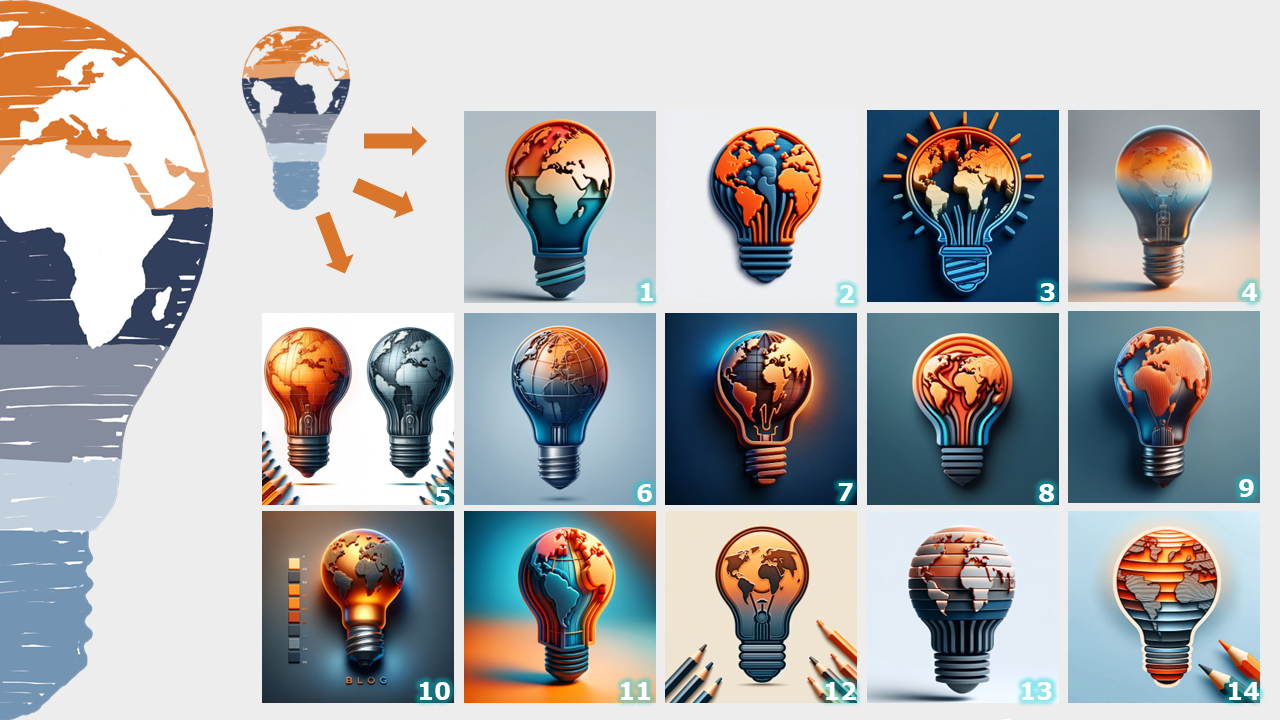
Which of the images here do you like? Also, I would prefer it if someone, who has more experience with prompting can help me accelerate here.
AI Attempt 2 – Microsoft Designer
Undeterred, I turned to Microsoft Designer, hoping its reputed versatility and user-friendly interface would yield better results.
This time, I sought to transform myself into a comic character, envisioning a playful and distinctive representation of my persona. My goal was to use it in a presentation I will be making in a while and for which I’m currently preparing.
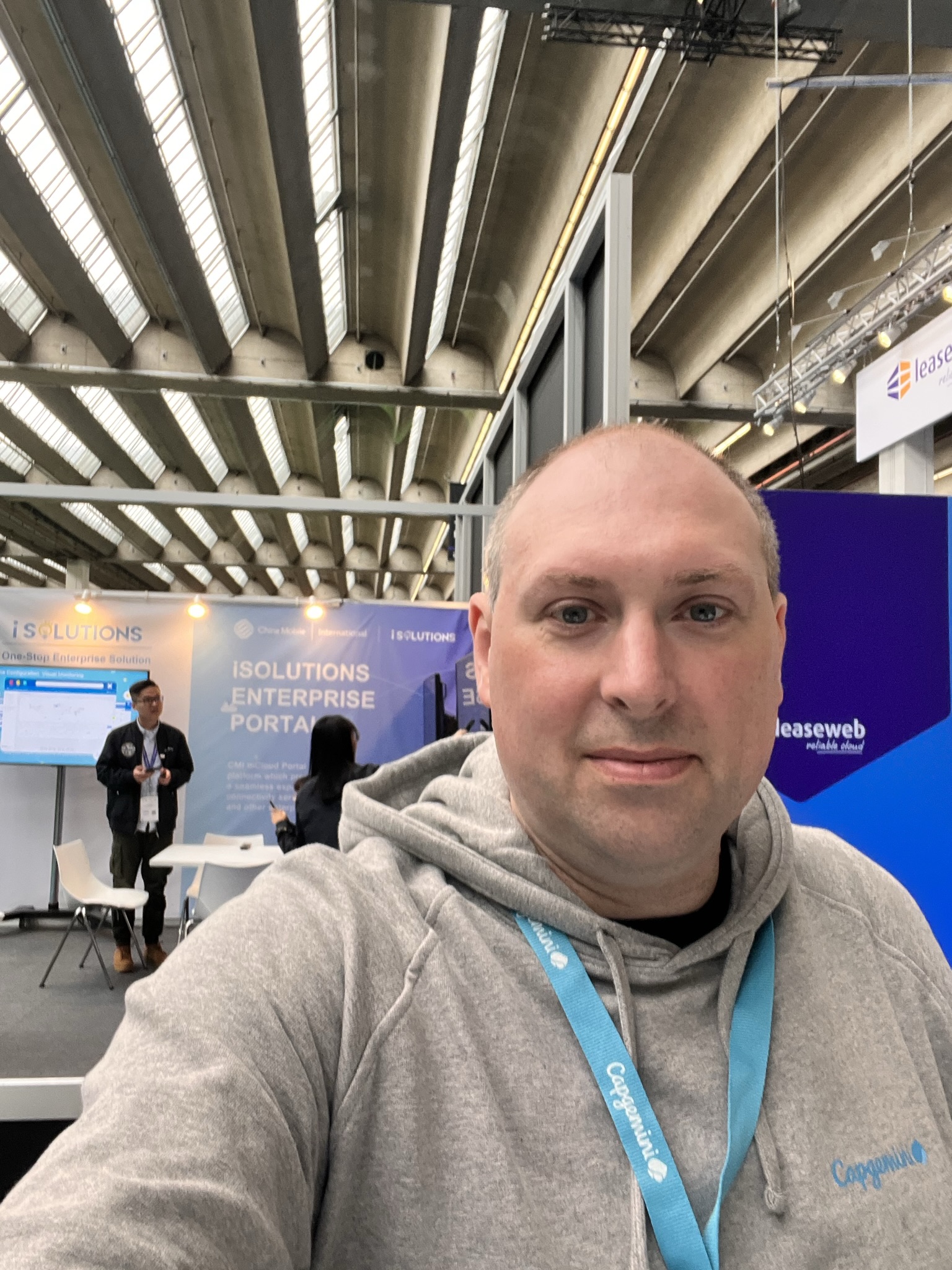
With enthusiasm, I navigated through the platform’s features, finetuning my requests and eagerly awaiting the outcome. Sadly, once again I was left disappointed as the generated designs failed to capture the essence of my vision.
Instead of the vibrant and dynamic character I had imagined, the results felt generic and uninspired, lacking the personal touch that defines effective branding. Again, I used some selfies and uploaded them into the prompt as reference. I added some details as I thought it would help the AI to bring some personal touches to it.
Here’s what I went with:
I am a 40-year-old half-bald male. I am kind. I have blue eyes, and I often wear hoodies with jeans and sneakers. I love to read, learn, and share my experience with others. I am married and have three kids. I am a thought leader in the area of Public Cloud. I am shy, wise, and intelligent. Please create a comic character based on my photo and input.
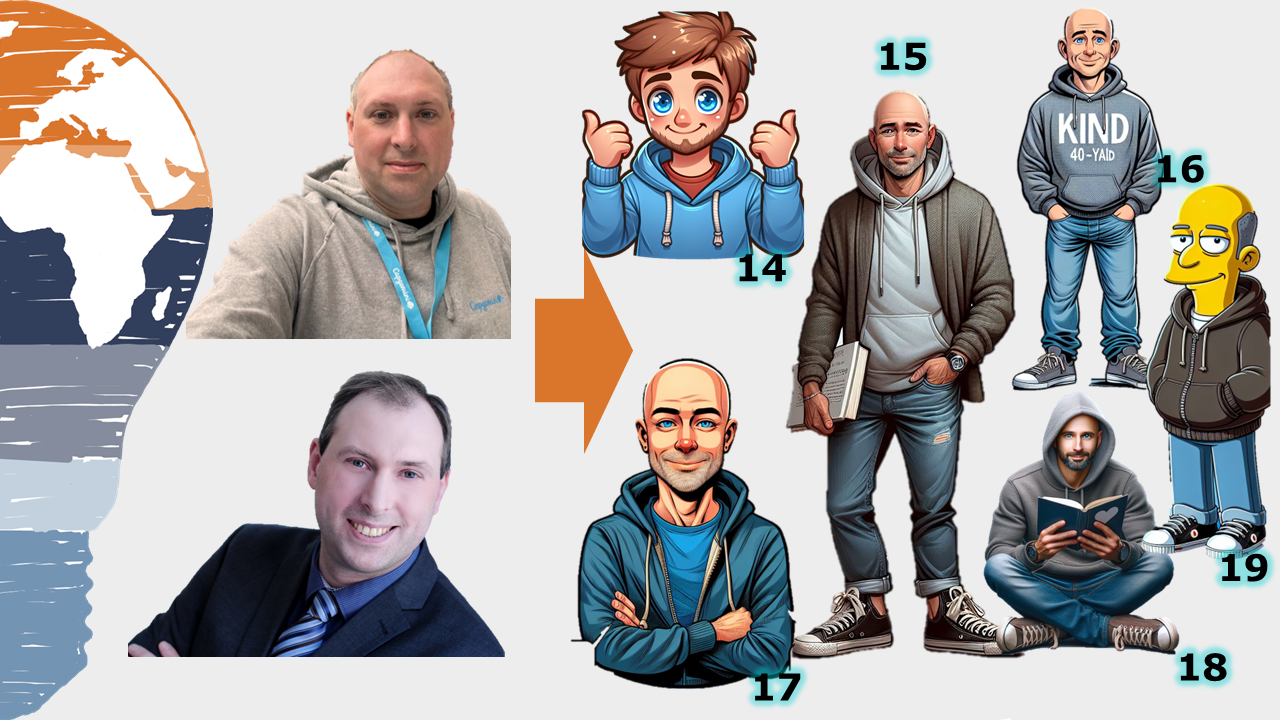
Again, dissatisfied with the first results, I proceeded to give feedback. Annoyingly, I found that with each request, the output became progressively worse.
Here’s an example of what I mean:
“That picture unfortunately has a beard. I never wear a beard, so please only generate comic figures without a beard (or shaved).”
The subsequent results? You guessed it. Characters with beards, without exception.
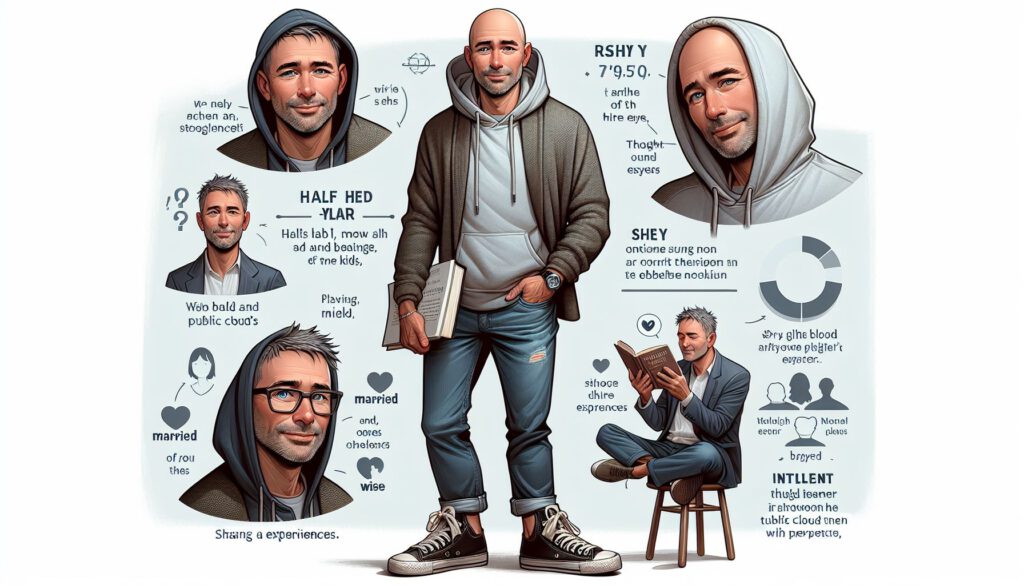
A second annoying observation is that, if I told the AI that I would like the results to look like a pencil drawing, it simply put pencils into the generated results. Obviously not what I had in mind.
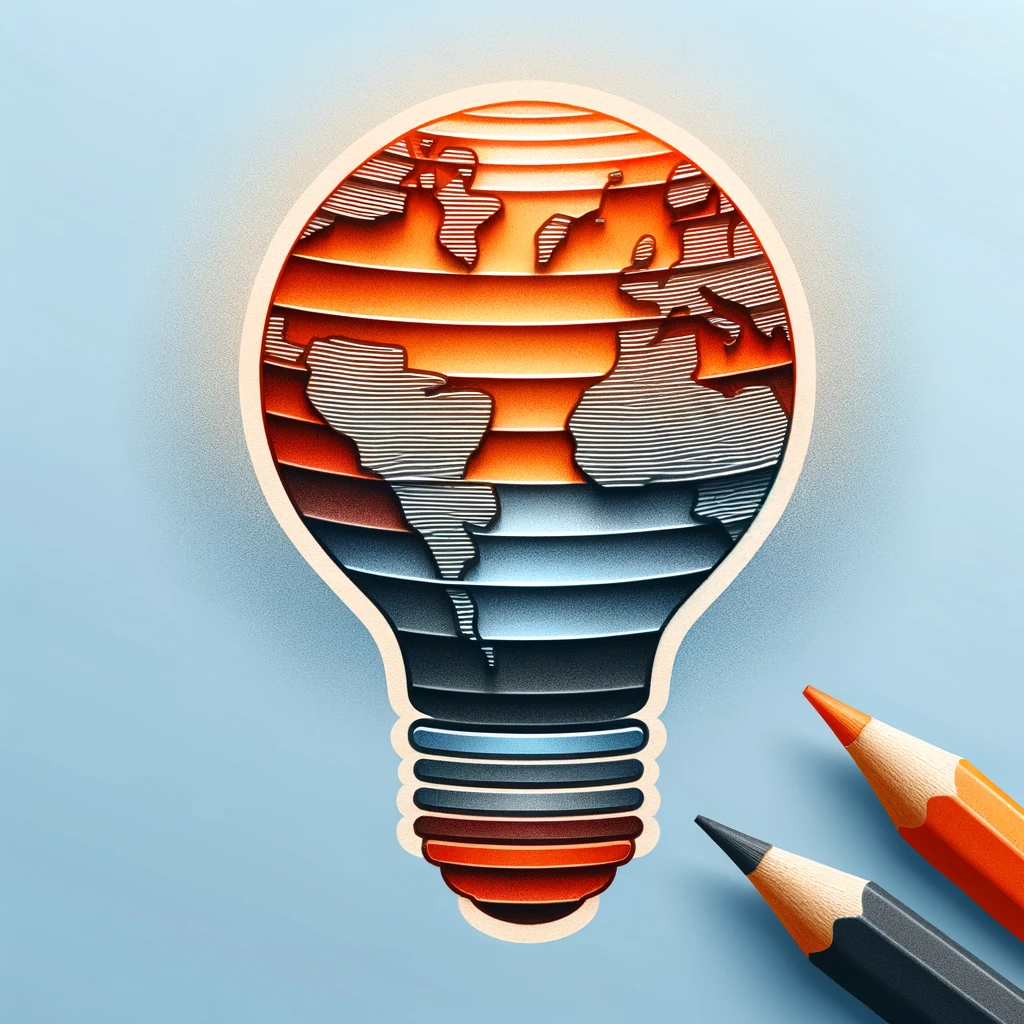
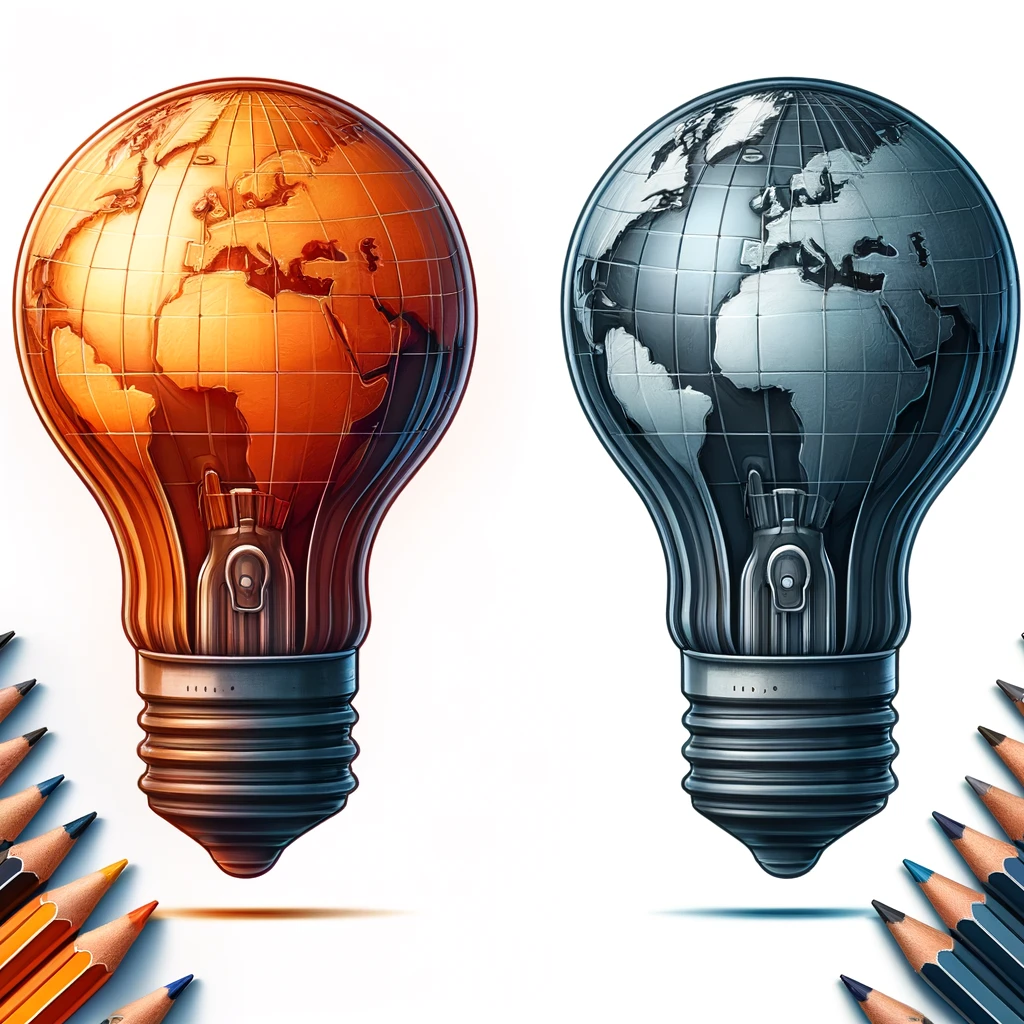
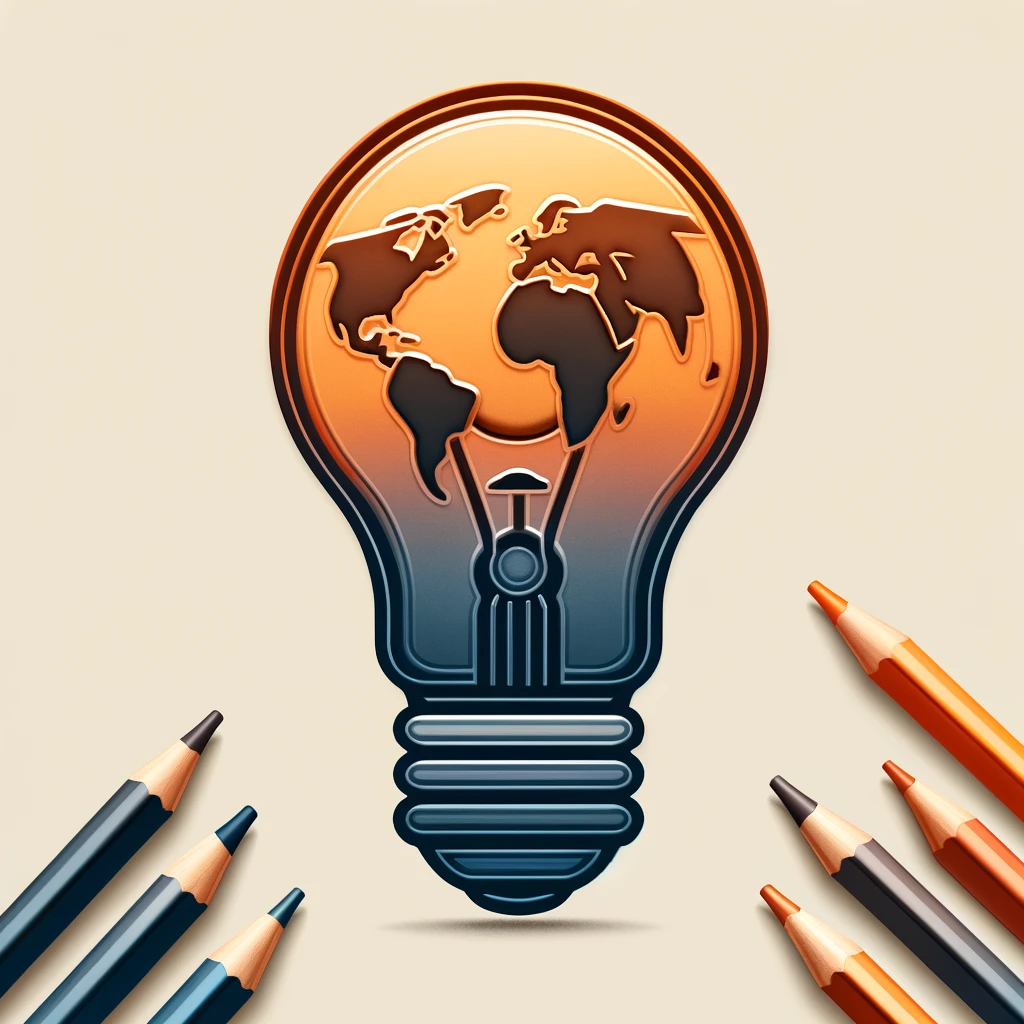
I also wonder if I might have some copyright issues if using some of the options produced. Option 19 in the examples above looks like it came straight out of The Simpsons (despite this never appearing in my prompts). This provides some interesting food for thought about how the model is trained and
Back to the drawing board?
Reflecting on my experience with these AI design tools, I am left with mixed feelings. While I appreciate the advancements made in artificial intelligence and its potential to revolutionize the creative process, my encounters with Microsoft Designer and DALLE Logo Creator highlight the limitations that still exist – either in the capability of these tools, my prompting skills, as I suspect might be the case, both. Despite the claims of innovation and efficiency, these platforms struggled to grasp the nuances of design concepts and translate them into compelling visual representations.
As I continue my quest for exploring the possibilities of all of the major generative AI tools, I am reminded of the irreplaceable value of human creativity and intuition in the creative process. While AI can certainly aid in the execution of certain tasks, it is ultimately the human touch that imbues designs with meaning and resonance. Though my journey with Microsoft Designer and DALL E Logo Creator may have ended in disappointment, the experience serves as a valuable reminder of the importance of human ingenuity in the world of design.
The value of the human touch while using AI
A committed learner, I’m always looking at how personal experiences can influence my professional life and vice versa.
In my experience with AI-powered design tools, I learned the value of the human touch in setting the course
For me as a Cloud Solution Lead in Capgemini, a world leader in business transformation, this experience highlights the importance of being able to count on the support of a knowledgeable partner when delving into any new technology domain – just like our enterprise clients can when they want to achieve strong business results with AI.
Although we’re talking about different scales and stakes, I can’t help but think that my experience with AI and Design is – at a basic level – similar to how many businesses approach cloud or AI. We know what can be achieved, but actually realizing the value is another matter altogether. To do this requires experience and specialized knowledge. This is where it makes sense to turn to a strategic partner. Without one, you can achieve some semi-satisfactory results, but you know you won’t be realizing the full potential and you’ll likely spend more money and time, without achieving the outcomes you crave. Just like I did when using GenAI for my logo design.
The benefit of working with Partners
Partners like Capgemini play a crucial role in guiding organizations through the intricacies of new technologies like AI and cloud, by demonstrating the capabilities and limitations. By providing strategic guidance and leveraging their expertise, Capgemini empowers clients to make the best use of technology, ensuring that it enhances and elevates (not replaces) human ingenuity in the pursuit of desired business results. 🎨
Going back to my design dilemma, I’m not yet looking for a ‘strategic partner’ to help with the design of the logo for my blog – I’m too committed to resolving this technology + human equation for myself. But my experience has shown me, once again, that, when it comes to working with new and sophisticated technology in a business context, we cannot expect the technology to provide all the answers – the results we achieve with it are only as good as the human touch that guides it and the partners we work with.
- Which one of all the pictures do you like the most?
- Which one is the worst in your opinion?
- Are you a prompt expert? What advice would you give?
- Tell me about your thoughts on this experience in the comments!


No Comments Yet